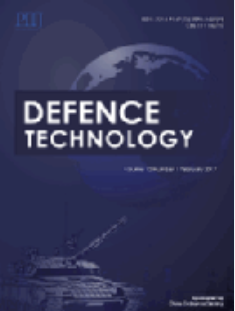不同气体钨极电弧焊变体AZ31B镁合金焊缝组织与力学性能
IF 5
Q1 ENGINEERING, MULTIDISCIPLINARY
引用次数: 0
摘要
这项工作旨在(i)了解AZ31B的常规和脉冲气体钨极电弧焊(GTAW),以及(ii)探索高频焊接(100 Hz - 1500 Hz)。6mm厚AZ31B合金板采用交流(AC)和直流(DCEP)极性的GTA焊接获得了无裂纹的部分熔透焊缝。在直流负极(DCEN)条件下焊接,与交流和DCEP条件下焊接参数相同,焊缝完全熔透,且存在微裂纹。采用DCEN极性脉冲GTA焊接,脉冲频率为1hz,脉冲持续时间比为1:1,可实现无缺陷全熔透焊缝。所得的DCEN P 1:1焊缝金属的显微组织优于传统的DCEN焊缝。脉冲持续时间比为1:2和1:4的焊缝缺乏穿透性,但由于热量输入较低,焊缝的显微组织更细。在ActivArc®-高频(AA-HF)模式焊接中,高频脉冲的电弧收缩是导致更深熔透的原因。在脉冲和AA-HF条件下生产的焊缝硬度高于常规的DCEN、DCEP和AC GTA焊缝,这是由于更精细的组织。AA-HF GTA焊接产生无缺陷的深熔透焊缝,具有良好的显微组织特征/机械性能,当焊接频率为1500 Hz时,生产率提高了50%。本文章由计算机程序翻译,如有差异,请以英文原文为准。

Microstructure and mechanical properties of welds of AZ31B magnesium alloy produced by different gas tungsten arc welding variants
This work aimed to (i) understand conventional and pulse gas tungsten arc welding (GTAW) of AZ31B, and (ii) explore high frequency welding (100 Hz–1500 Hz). GTA welding with alternating current (AC) and direct current electrode positive (DCEP) polarities yielded crack-free partial penetration welds for 6 mm thick AZ31B alloy sheet. Welding under direct current electrode negative (DCEN) polarity with identical parameters as that for AC and DCEP resulted in full penetration welds that had microcracks. Defect-free full-penetration welds could be accomplished with pulse GTA welding using DCEN polarity at a pulse frequency of 1 Hz with a pulse duration ratio of 1:1. The resultant DCEN P 1:1 weld metal had a microstructure finer than the conventional DCEN weld. Welds produced with pulse duration ratios of 1:2 and 1:4 lacked penetration but had a much finer microstructures because of the lower heat input. The arc constriction by the high frequency pulsing in the ActivArc®-High frequency (AA-HF) mode welding was responsible for deeper penetration. Welds produced under DCEN pulsing and AA-HF conditions had hardness higher than conventional DCEN, DCEP and AC GTA welds, attributed to the finer microstructure. AA-HF GTA welding produced defect free deeper penetration welds with good microstructural features/mechanical properties and also gave an advantage of 50% enhanced productivity when welded at 1500 Hz.
求助全文
通过发布文献求助,成功后即可免费获取论文全文。
去求助
来源期刊

Defence Technology(防务技术)
Mechanical Engineering, Control and Systems Engineering, Industrial and Manufacturing Engineering
CiteScore
8.70
自引率
0.00%
发文量
728
审稿时长
25 days
期刊介绍:
Defence Technology, a peer reviewed journal, is published monthly and aims to become the best international academic exchange platform for the research related to defence technology. It publishes original research papers having direct bearing on defence, with a balanced coverage on analytical, experimental, numerical simulation and applied investigations. It covers various disciplines of science, technology and engineering.
 求助内容:
求助内容: 应助结果提醒方式:
应助结果提醒方式:


